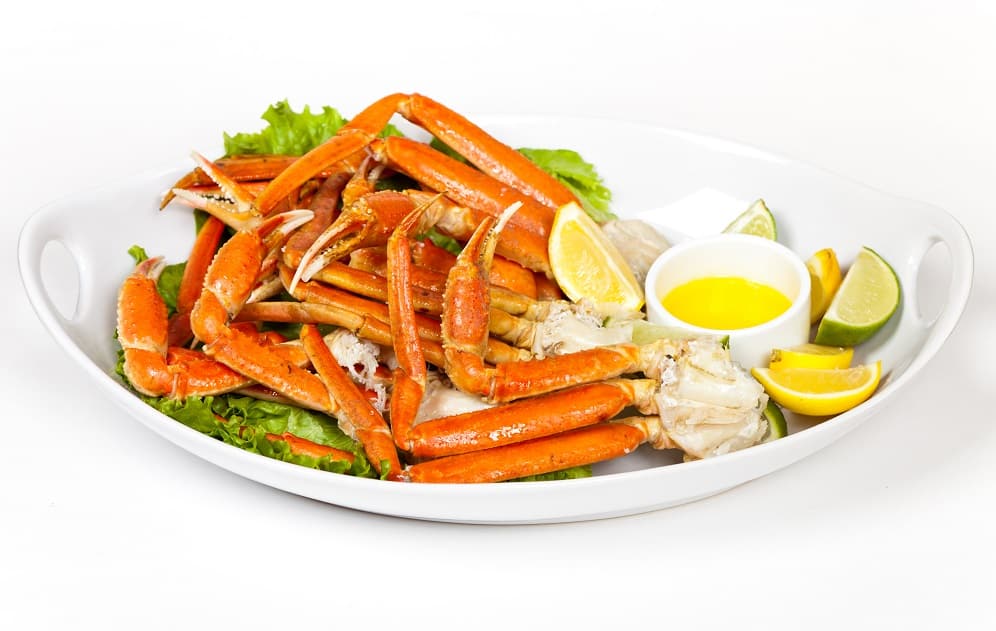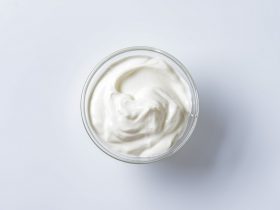Pregnancy is a period of increased nutritional needs. An adequate supply of nutrients is required to ensure balance between maternal and fetal needs. Some nutrients are needed for maternal health while others are for the infant and may affect birth outcomes (Markhus et al., 2015).
Seafood is part of a balanced diet during pregnancy. It is important to eat a variety of seafood that are low in mercury. Crab legs and crab in general are safe to eat while pregnant as long as they are cooked properly to avoid food borne illnesses.
Benefits of Seafood Intake

Maternal nutrition during pregnancy is part of the first 1,000 days of life that are said to be crucial in a child’s neurodevelopment and lifelong mental health. Failure to acquire key nutrients during this time of critical brain development may lead to lifelong deficits in brain function (Schwarzenberg & Georgieff, 2018).
According to the U.S. Food and Drug Administration (FDA) in 2020, seafood is part of a healthy diet, and provides the following:
- Protein
- Omega-3 fatty acids (DHA and EPA)
- Vitamin B12 and vitamin D – more than in any other food type
- Iron – important for pregnant women
- Selenium, zinc and iodine
These are key nutrients that are fundamental for optimal fetal and child neurodevelopment (Schwarzenberg & Georgieff, 2018). Therefore, women should consume seafood during pregnancy to achieve optimal intakes of these nutrients (Bonham et al., 2009). Seafood is defined by the 2015-2020 Dietary Guidelines for Americans (DGA) as “a large category of marine animals that live in the sea and in freshwater lakes and rivers” (Hibbeln et al., 2019).
Hibbeln et al. in 2019 conducted two systematic reviews and concluded that improved neurocognitive development was associated with consumption of a variety of seafood during pregnancy as compared to eating no seafood. Findings from an observational, prospective study by Bonham et al. (2009) also highlighted the importance of seafood in the diet of pregnant women to ensure adequate intake of micronutrients needed for fetal development.
The recommendation from the 2015-2020 DGA states that pregnant women should consume 8 to 12 ounces of different seafood per week, from choices that are low in mercury. One serving is equivalent to 4 ounces, hence 2 to 3 servings per week is recommended from the “Best Choices” list, which includes crab. Alternatively, 1 serving can be consumed from the “Good Choices” list (US FDA, 2020).
Potential Risks from Eating Seafood
Exposure to Mercury
Mercury is a known neurotoxin, exposure to which occurs further through the human diet, particularly from seafood. High levels of mercury exposure are said to result in neurological and behavioral disorders, such as tremors, memory loss, neuromuscular changes, renal and thyroid disorders, and death. Moderate levels of exposure can have more subtle effects, including adverse effects on neurological, cardiovascular and immune functions (Karagas et al., 2012).
During pregnancy, mercury is able to readily cross the placenta. Compared to maternal levels, fetal levels have been found to be even greater (Ding et al., 2013).
While seafood consumption is associated with exposure to mercury, it is also an important source of nutrients needed for fetal development. This resulted in government bodies developing recommendations on how much seafood to eat safely during pregnancy, so as to balance the benefits of seafood intake from the potential adverse effects from exposure to mercury (Taylor et al., 2016).
However, epidemiological studies on Seychelles Islands in the Indian Ocean did not reveal any adverse effects on people who are heavy consumers of seafood (Clarkson & Strain, 2003). In addition, according to Taylor et al. in 2016, moderate levels of mercury during pregnancy were not associated with difference in anthropometric variables (head circumference and crown-heel length), or risk of preterm delivery or low birth weight. Rather, consumption of seafood may have a protective role on birth weight. Therefore, seafood intake during pregnancy should still be encouraged.
Hibbeln et al. in 2019 found that improved neurocognitive development began at the lowest amounts of seafood intake at about 4 ounces per week. This benefit continued through the highest amounts of seafood intake, above 12 ounces per week, with some even reaching more than 100 ounces per week. Despite the high range of seafood consumption by some participants, and the associated increase in mercury exposure, no adverse neurocognitive outcomes were reported among the pregnant women’s offspring.
Food Poisoning
Acute Gastroenteritis
Chen et al. in 2018 found that food borne acute gastroenteritis (AGE) was associated with frequent consumption of raw seafood. Meanwhile, improper food heating and storage are the most important risk factors in food borne AGE.
Botulism
Clostridium botulinum causes botulism, a food borne illness characterized by vomiting, thirst, dryness of mouth, urinary retention, constipation, blurred vision, and difficulties in speaking, breathing and swallowing. Death may ensue after respiratory paralysis or heart failure. Among all outbreaks of botulism, majority are associated with consumption of fish and seafood (Bhalla et al., 2019).
Yersiniosis
Yersiniosis manifests as fever, stomach ache, bloody diarrhea, and may resemble appendicitis in adults. Humans are mainly infected by Yersinia enterocolitica through food, in particular raw pork, but also others including seafood (Chlebicz & Slizewska, 2018).
Listeriosis
Listeriosis is caused by the pathogen Listeria monocytogenes. It is estimated that 99% of the cases of Listeriosis come from contaminated food, which includes seafood, in particular crab, shrimps and smoked mussels (Chlebicz & Slizewska, 2018).
How to Eat Crab Safely During Pregnancy

Do Not Eat Raw
Raw or undercooked crab can contain disease-causing parasites and bacteria. Thorough cooking can kill these pathogens and help to avoid food borne illnesses.
Be Careful When Eating Out
Crab is safe to eat during pregnancy only when prepared correctly. So, when eating out, make sure that your dish has been properly cooked. Ask the chef or server how your crab dish was prepared and cooked. When in doubt, choose another dish instead.
Ensure Hygienic Food Practices
Live crab should be stored in well-ventilated containers, while fresh crab should be placed in airtight containers in the refrigerator or packed in ice. While preparing raw crab, make sure to use separate cutting boards, plates and utensils for raw and cooked seafood.
After handling raw crab, wash all cutting boards and knives, as well as food preparation areas, with soap and water. Always wash your hands before and after handling food.
Eat Crab in Moderation
Majority of fish and seafood are low in cholesterol. Exceptions to this are crab, lobster, shrimp and oysters (Raatz et al., 2013). Therefore, make sure to consume crab in moderate amounts.
Final Thoughts
Consuming a variety of seafood types during pregnancy is important to achieve all needed nutrients that are crucial for proper fetal development. A pregnant woman should aim to eat 2 to 3 servings, or 8 to 12 ounces, per week of seafood that are low in mercury.
Both crab and imitation crab are safe to eat during pregnancy as long as they are cooked thoroughly. Practicing proper hygiene during food preparation is another way to avoid food contamination risks. Despite published recommendations, asking your doctor is the best way to know if crab is safe for you to eat, as well as how much you can eat safely.
References
- https://www.medicalnewstoday.com/
- https://www.healthline.com/
- Bhalla, T. C., Monika, Sheetal, & Savitri. (2019). International laws and food-borne illness. Food Safety and Human Health, 319-371. doi: 10.1016/B978-0-12-816333-7.00012-6
- Bonham, M., Duffy, E., Robson, P., Wallace, J., Myers, G., Davidson, P., …, & Livingstone, M. B. (2009). Contribution of fish to intakes of micronutrients important for fetal development: A dietary survey of pregnant women in the Republic of Seychelles. Public Health Nutrition 12(9), 1312-1320. doi: 10.1017/S136898000800387X
- Chen, Y., Wen, Y., Song, J., Chen, B., Ding, S., Ding, L., & Dai, J. (2018). The correlation between family food handling behaviors and foodborne acute gastroenteritis: A community-oriented, population-based survey in Anhui, China. BMC Public Health 18, 1290. doi: 10.1186/s12889-018-6223-x
- Chlebicz, A., & Slizewska, K. (2018). Campylobacteriosis, salmonellosis, yersiniosis, and listeriosis as zoonotic foodborne diseases: A review. International Journal of Environmental Research and Public Health 15(5), 863. doi: 10.3390/ijerph15050863
- Clarkson, T., & Strain, J. (2003). Nutritional factors may modify the toxic action of methyl mercury in fish-eating populations. The Journal of Nutrition 133(5 Suppl 1), 1539S-1543S. doi: 10.1093/jn/133.5.1539S
- Ding, G., Cui, C., Chen, L., Gao, Y., Zhou, Y. Shi, R., & Tian, Y. (2013). Prenatal low-level mercury exposure and neonatal anthropometry in rural northern China. Chemosphere 92(9), 1085-1089. doi: 10.1016/j.chemosphere.2013.01.045
- Hibbeln, J., Spiller, P., Brenna, J. T., Golding, J., Holub, B., Harris, W., …, & Carlson, S. (2019). Relationships between seafood consumption during pregnancy and childhood and neurocognitive development: Two systematic reviews. Prostaglandins, Leukotrienes & Essential Fatty Acids 151, 14-36. doi: 10.1016/j.plefa.2019.10.002
- Karagas, M., Choi, A., Oken, E., Horvat, M., Schoeny, R., Kamai, E., …, & Korrick, S. (2012). Evidence on the human health effects of low-level methylmercury exposure. Environmental Health Perspectives 120(6), 799-806. doi: 10.1289/ehp.1104494
- Markhus, M. W., Rasinger, J. D., Malde, M., K., Froyland, L., Skotheim, S., Braarud, H. C., …, & Graff, I. E. (2015). Docosahexaenoic acid status in pregnancy determines the maternal docosahexaenoic acid status 3-, 6- and 12 months postpartum: Results from a longitudinal observational study. PLOS ONE 10(9), E0136409. doi: 10.1371/journal.pone.0136409
- Raatz, S., Silverstein, J., Jahns, L., & Picklo, M., Sr. (2013). Issues of fish consumption for cardiovascular disease risk reduction. Nutrients 5(4), 1081-1097. doi: 10.3390/nu5041081
- Schwarzenberg, S. J., & Georgieff, M. (2018). Advocacy for improving nutrition in the first 1000 days to support childhood development and adult health. Pediatrics 141(2), e20173716. doi: 10.1542/peds.2017-3716
- Taylor, C., Golding, J., & Emond, A. (2016). Blood mercury levels and fish consumption in pregnancy: Risks and benefits for birth outcomes in a prospective observational birth cohort. International Journal of Hygiene and Environmental Health 219(6), 513-520. doi: 10.1016/j.ijheh.2016.05.004
- U.S. Food and Drug Administration. 2020. Advice about eating fish. https://www.fda.gov/food/consumers/advice-about-eating-fish




